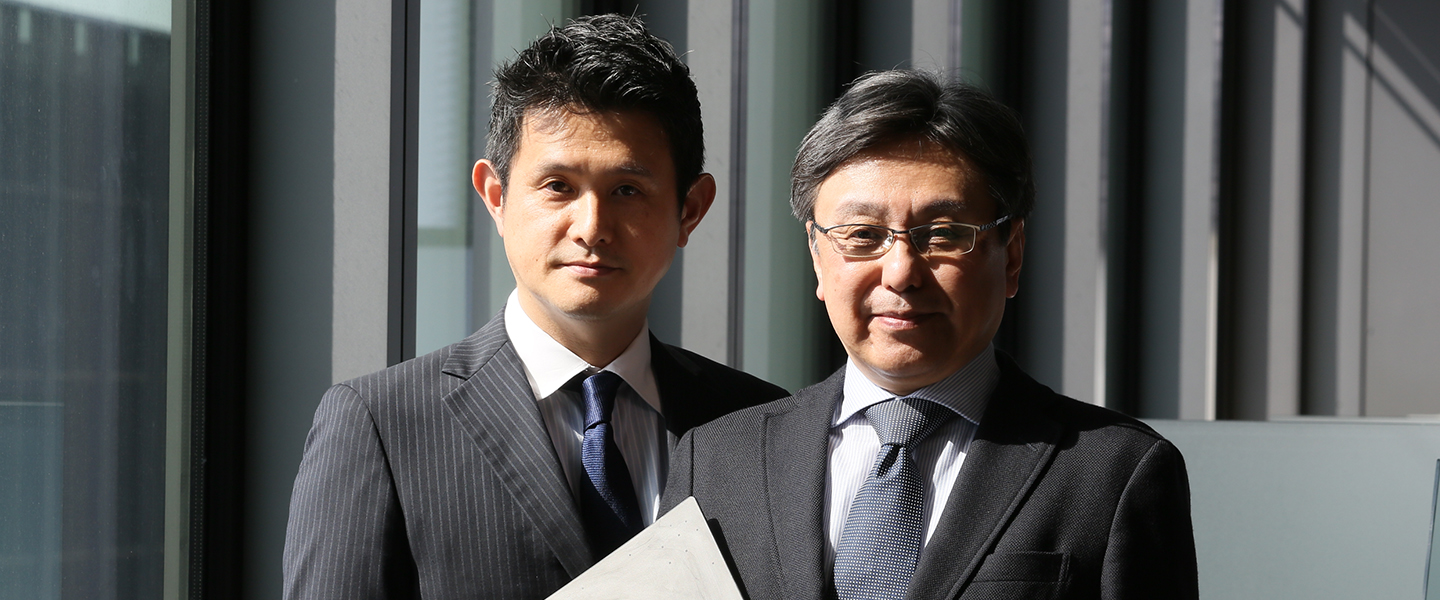
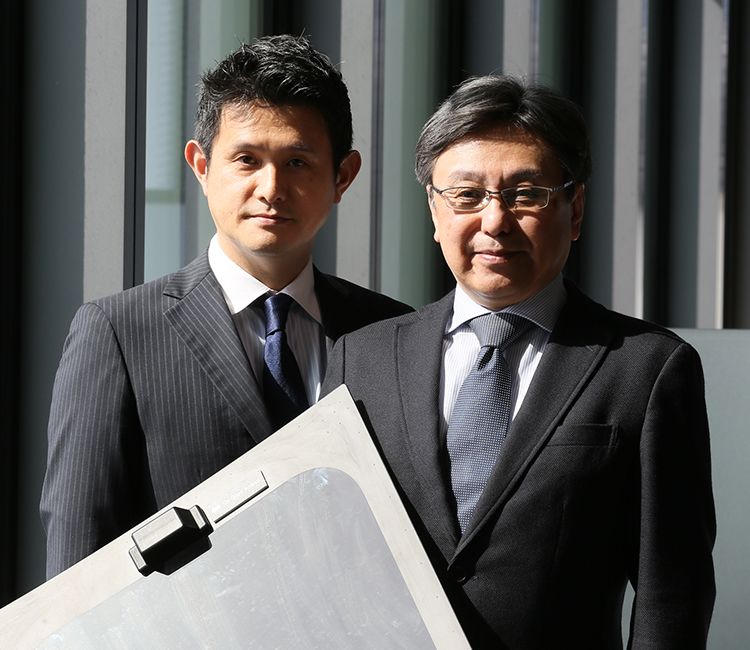
AGC glass antennas help mobility industry adopt better connectivity
- #Sustainability
Glass antennas integrated into the front and rear windshields play a pivotal role in ensuring secure and seamless automobile connectivity -- essential for the mobility industry in the CASE era. But developing glass antennas to meet the diverse needs of automakers as regards safety, comfort and styling is no easy task for materials manufacturers. AGC remains dedicated to driving new technology to meet the needs of this evolving industry.
Profile

Kiyoshi Nobuoka
Senior Manager Mobility Business Development Office Automotive Company, AGC

Hideaki Shoji
Manager Mobility Business Development Office Automotive Company, AGC
As the importance of CASE (Connected, Autonomous, Shared & Services, Electric) increases, the automotive industry has to rethink mobility to keep up with the ever-changing needs of society. Reliable connectivity is crucial to this end.
For example, autonomous driving needs stable connectivity with AI systems to feed big data to information centers across wide areas. Uninterrupted connectivity between vehicles and IoT networks is key to monitoring the real-time status of vehicles on the road in order for third parties to provide quality sharing services. Electric vehicles also require this kind of connectivity to schedule battery recharging, taking into account the remaining charge and distance to charging stations.
The 5G services became commercially available in Japan in 2020, and the emergence of CASE will push related industries to develop technology that provides higher performance and more reliable wireless communication for vehicles.
Technologies for wireless systems on commercial vehicles such as car radios, GPS and telematics are similar to those in smartphones. But making advanced vehicle antennas for the systems presents a unique challenge.
“The quality of antennas for automotive wireless systems determines not only communication performance but also the overall product value of the vehicle,” says Kiyoshi Nobuoka, senior manager of Automotive Company, the mobility arm of AGC. Traditional antennas for car radios, digital TVs and GPS are typically either pole or shark-fin types. However, besides their unsightly appearance, these antennas sometimes caused problems, such as becoming damaged in car wash facilities and subsequently triggering customer complaints.
In the 1970s, a new type of antenna emerged consisting of thin wires embedded in the laminated glass of front windshields that could receive lower frequencies like those used for FM radio. Since then, glass antennas have evolved to meet higher styling and communication requirements.

Kiyoshi Nobuoka,Senior ManagerMobility Business Development Office Automotive Company, AGC
As a leading manufacturer of glass antennas since their inception, AGC is dedicated to innovation to meet the changing demands of the mobility industry in the CASE era.
AGC has developed glass antennas for Sub6 band radio frequencies used in 5G networks. The antennas integrate a 4x4 MIMO (multi-input, multi-output) antenna system for the 6 GHz band (617 MHz to 5000 MHz) into the front windshield. They can also be distributed between a vehicle’s front and rear glass without compromising style.
In 2018, in collaboration with NTT DoCoMo and Ericsson Japan, AGC successfully tested 5G millimeter wave band-enabled antennas for communication in vehicles traveling at 100 km/h. The test array comprised eight antenna elements attached to the front, side rear quarter, and rear glass surfaces of the vehicle. The system achieved a communication speed of up to 8 Gbps using 28 GHz band radio frequencies (with a bandwidth of 732 MHz) -- the first in the world for the type.*
*According to AGC tests
In recent years, wireless systems for vehicles have consisted of multiple antennas embedded in a single glass panel (Figure 1). However, for glass antenna manufacturers, this type of integration presents technical challenges.
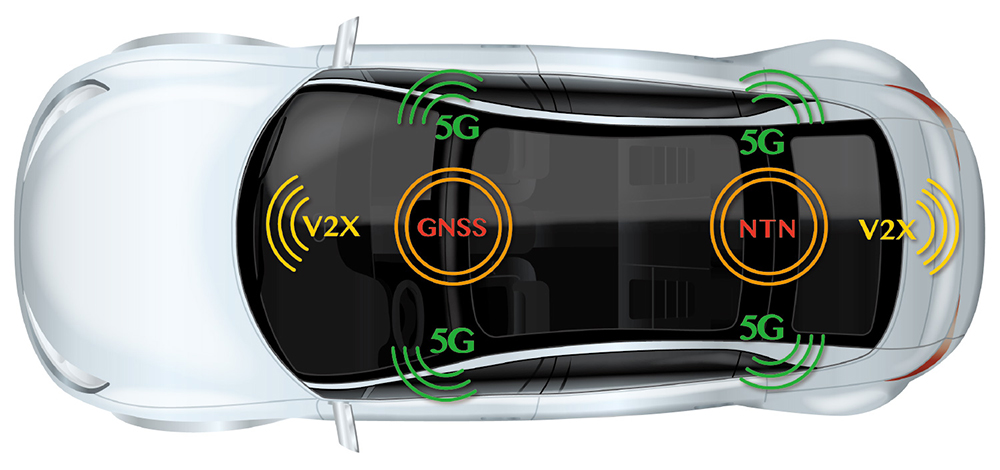
Figure 1: Emerging needs for glass antennas
As autonomous driving continues to emerge, the demand for features such as GNSS (global navigation satellite system), 5G and NTN (non-terrestrial network) will rise. This means that vehicle glass must not only function as a protective material but also incorporate function as RADOME for antennas. Also, since EVs utilizing large glass roof are becoming increasingly popular, heat reflection and insulation have become important factors for vehicle glass.
・Satellite stations: Roof serves as the ideal location for installing communication antennas for satellite and zenith-based systems.
・Terrestrial stations: Distributed placement is optimal for 5G communication in fast-moving vehicles.
In the past, car radios only needed a simple antenna for FM broadcasts in the 10 MHz to 90 MHz bandwidth. Since the 2000s, vehicles have required more antennas to handle more frequencies, such as terrestrial digital TV broadcasts (typically between 470 MHz and 700 MHz,) GPS (around 1.5 GHz) and mobile phone networks (700 MHz to 3 GHz LTE.) Currently, there is demand for antennas that can support even higher frequencies, such as Sub6 (3 GHz to 6 GHz) or millimeter wave frequencies (28 GHz to 40 GHz) for 5G networks.
As the number of required frequencies increases, developing new glass-embedded antennas becomes more difficult -- much more so than for smartphone antennas. Automotive glass often incorporates a special conductive coating to maintain comfortable temperatures in summer and winter. However, the coating can interfere with radio waves. Achieving both connectivity and comfort demands exceptional materials expertise, requiring antenna designs that meet the specific requirements of devices and locations, as well as employing reflection control technologies to support frequency-selective surfaces and specific frequencies.
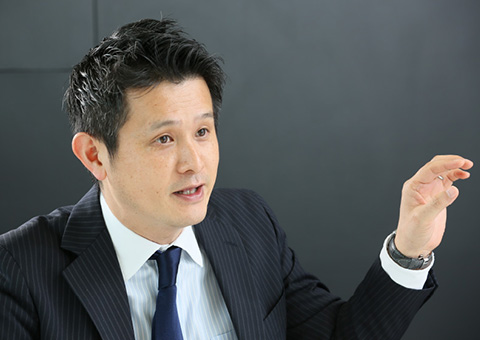
Hideaki Shoji,Manager Mobility Business Development Office Automotive Company, AGC
Automotive glass must meet diverse technical standards -- such as optical control for dimming brightness and reducing ultraviolet light, thermal control for heat shielding and insulation, and compliance with international safety standards regarding strength and fracture patterns -- while satisfying requirements of connectivity and styling. “Such a challenge necessitates a deep and extensive understanding of the materials used in glass and antenna elements,” said Hideaki Shoji, manager of the Mobility Business Development Office at the automotive unit of AGC. With proven expertise in glass antennas, AGC is uniquely positioned to address these complexities.
Despite technical challenges, the demand for 5G-compatible glass antennas is rapidly increasing, fueled by the growing deployment of Sub6 -- one of the two bands of Sub6 and millimeter wave in 5G. “We foresee the market being ready for the introduction of Sub6-compatible glass antennas around 2025, particularly in the U.S. and China markets,” said Nobuoka. “AGC is fully committed to R&D and production of this product to seize the opportunity.”
U.S. startup Halo.car, headquartered in Las Vegas, has already started providing an innovative rental car service using 5G. Users can specify pick-up and drop-off points within the city (Figure 2). To achieve this, the company installed six cameras in each vehicle that transmit data via 5G to a central processing platform. The company then remotely dispatches vehicles after viewing real-time data. To ensure reliable communication, Halo.car has incorporated AGC's Sub6-compatible glass antennas, which can be distributed strategically to minimize communication drop-offs.
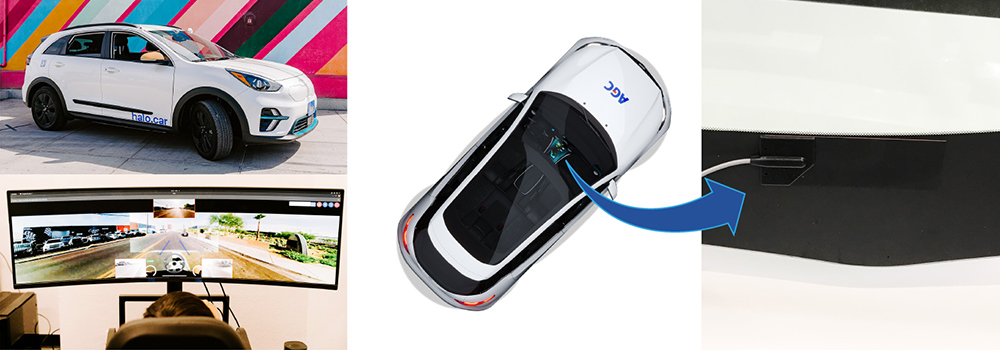
Figure 2: Rental cars remotely controlled via 5G
Halo.car offers a groundbreaking rental car service in downtown Las Vegas, allowing users to specify pick-up and drop-off points via remote-controlled, unmanned driving (top left). Operators remotely control the vehicles via video transmitted from the company's office (bottom left) and installed glass antennas (right).
“To ensure safety in such services, the glass antennas must be capable of transmitting large-capacity image data without interruption,” said Hideaki Shoji, a manager at the automotive unit of AGC.
The company and Halo.car jointly launched proof-of-concept trials in November 2022. After confirming reliability, the service was commercially launched in January 2023.
At CES 2023, AGC’s prototype of its Sub6 glass antenna drew significant interest from automakers and global OEMs, reflecting the industry’s appetite for 5G-compatible glass antennas. Negotiations for deals are now underway. “We are committed to helping the industry realize next-generation mobility through our materials expertise, including fundamental research for glass antennas,” Nobuoka said.
The 5G Automotive Association, a coalition that develops and promotes standardized protocols for vehicles utilizing 5G, released a report showing the advantages of the so-called Distributed Antenna System. By distributing antennas throughout the vehicle, wireless systems enable faster and more stable communication. "Glass antennas applied to large surface components like windshields and windows allow designers higher flexibility to achieve their aesthetic goals without compromise, keeping communication performance intact,” Shoji said.
Glass antennas are not limited to the automotive industry. Other sectors that connect to IoT or employ autonomous driving -- such as construction machinery, robotic agricultural equipment and micro-mobility for shipping -- are potential markets for AGC’s glass antennas.
AGC has established development bases for its antennas in Japan’s Aichi and Sagami regions, as well as in the U.S. (Michigan) and Belgium (Gosselies). Since March 2019, the different bases have been collaborating in the development of glass antennas that combine safety, comfort and connectivity for a wide range of mobility industries. Leveraging its expertise in materials technologies, AGC is fully prepared to provide transformative glass antenna solutions.
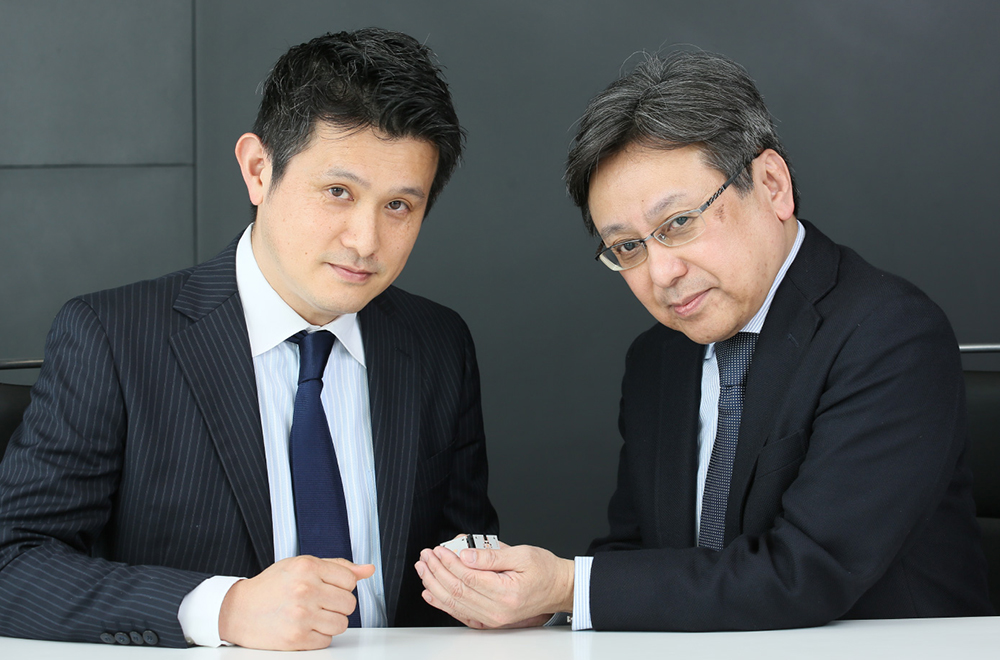
Reprinted from Nikkei xTECH Special
*Department names and titles are those at the time of the interview.






